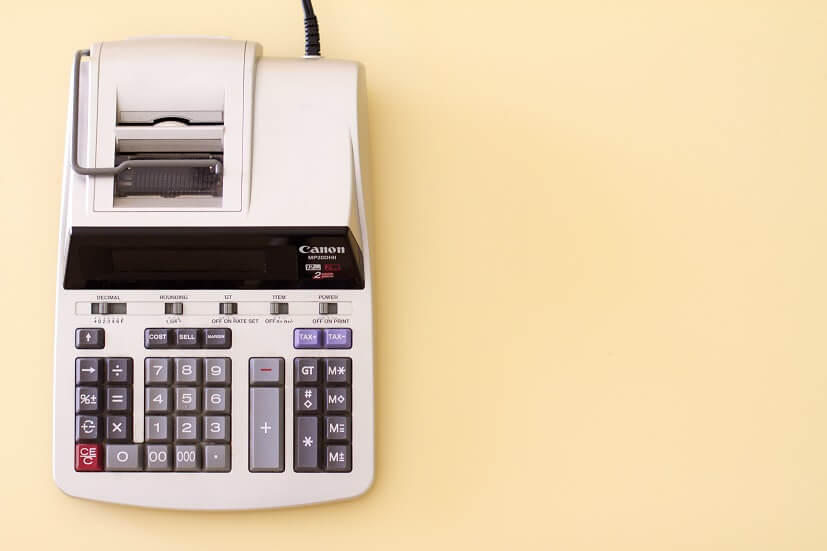Supplementary Retirement Scheme & SRS Accounts in Singapore: How do They Work?
The Supplementary Retirement Scheme (SRS) is a national scheme, like CPF, that aims to help Singaporeans save for their retirement. However, unlike CPF, SRS completely voluntary and its main draw is letting you enjoy tax benefits on your contributions.
To participate, all you have to do is open an account and make a contribution. But before you rush off to open an SRS account, first find out if this is suitable for you. Because of the way SRS is structured and the specific tax benefits it provides, you will only realise the full benefits of the scheme if you are an active investor looking to reduce your taxable income. It’s especially useful if your chargeable income is just a little over $40,000 a year.
These specific requirements also mean that SRS might not be for everyone. Find out if it is the right scheme for you as we explain all you need to know about SRS in Singapore. What is an SRS account? What are its benefits and disadvantages? How does SRS compare to CPF, and what role does it play in your retirement planning? Read on as we answer these questions and more.
What is the Supplementary Retirement Scheme (SRS)?
SRS is a voluntary savings scheme in Singapore that was introduced to encourage Singaporeans save more for retirement. It complements CPF and is another tool by the Singapore government to help residents prepare for old age.
Participating in the scheme entails opening an SRS account in Singapore, which is essentially a holding place for your retirement savings that helps you save more in the long run. There is no fixed contribution rate and you can contribute as much, or as little, as you like to your SRS account. Each SRS contribution you make lets you enjoy tax relief benefits for the following year, though subject to a limit.
Unlike a normal savings account, the SRS account is designed to help you grow your retirement funds through investment. You can invest your SRS funds into a variety of instruments that include stocks, bonds and endowment plans.
In addition, any gains you earn on your investments are tax-free before withdrawal, and only 50% of your withdrawals from SRS are taxable at retirement.
Benefits of SRS
The benefit of participating in SRS is undoubtedly the tax breaks it offers, while providing you with the opportunity to grow your retirement funds at the same time.
Any Singaporean, PR or foreigner can open an SRS account as long as they are earning an income and are:
- At least 18 years old
- Not undischarged bankrupts
- Not of unsound mind
From tax reliefs on your SRS contributions to tax-free returns on your investments, the tax breaks that SRS offers allow you to save more while your SRS funds can be funneled into investments for greater gains.
Tax reliefs
SRS is primarily known as a tax-relief tool. Every dollar you contribute to your SRS account is eligible for tax reliefs, though this is subject to a cap of $15,300 per year for Singaporeans and PRs, and $35,700 for foreigners.
This personal income tax relief feature is particularly relevant if you are looking to reduce your chargeable income. How much you have to pay in taxes each year depends on your income bracket, as detailed in the table below.
| Chargeable income | Income Tax Rate (% | Gross Tax Payable ($) |
| First $20,000 Next $10,000 |
0 2 |
0 200 |
| First $30,000 Next $10,000 |
- 3.50 |
200 350 |
| First $40,000 Next $40,000 |
- 7 |
550 2,800 |
| First $80,000 Next $40,000 |
- 11.5 |
3,350 4,600 |
| First $120,000 Next $40,000 |
- 15 |
7,950 6,000 |
| First $160,000 Next $40,000 |
- 18 |
13,950 7,200 |
| First $200,000 Next $40,000 |
- 19 |
21,150 7,600 |
Source: IRAS
From the resident tax rates listed above, you'll find that if you are earning more than $40,000 annually, your income tax increase exponentially as compared to the previous income bracket. This is where SRS might come in handy.
Imagine you have an annual income of $60,000. Without any tax reliefs, you income tax would come up to $1,950. Here's how it's calculated.
| Total tax payable | $1,950 |
| Chargeable income | $60,000 |
| Tax rates | First $40,000: $550 Next $20,000, taxed at 7%: $1,400 |
Meanwhile, if you’ve deposited the maximum amount of $15,300 into your SRS account, your taxable income is reduced to $44,700 and how much you'll have to pay in taxes falls drastically.
| Total tax payable | $879 |
| Chargeable income | $44,700 |
| Tax Rates | First $40,000: $550 Next $4,700, taxed at 7%: $329 |
By participating in SRS, you can reduce your income tax from $1,950 to $879. That's more than $1,000 saved on taxes!
Boost your retirement fund
The benefits of contributing to your SRS account are clear, but it doesn’t end there. Did you know that you can also benefit from using your SRS funds? You are allowed – and in fact, encouraged – to use your SRS funds for investments.
Depending on your preference and risk tolerance, you can invest your SRS funds in a wide variety of options. This includes high yield, high risk options like stocks and unit trusts, and safer options like Singapore Savings Bond (SSB) and single premium insurance saving plans.
On top of that, the returns earned from your SRS investments will not be taxed until you withdraw them. To make the most of your SRS savings, invest them and re-invest the returns. Leverage on compound interest to grow your retirement pot. And if you have no urgent need for the funds, leave it in your SRS account until you’ve reached the retirement age. At that point, only 50% of the withdrawals are taxable.
Disadvantages of SRS
Despite its tax-saving benefits, SRS does comes with some limitations. This includes a low base interest rate and restrictions such as withdrawal penalties.
Low interest rates
Unlike the attractive rates in your CPF accounts or high interest deposit accounts, the SRS account interest rate is a less-than-ideal 0.05% per annum. For this reason, you’re better off investing your SRS funds instead of letting them sit there idly as their value gets eroded due to inflation.
To earn more from the cash in your SRS account, you are strongly encouraged to use them for investments. For instance, you can use your SRS savings for single premium insurance products such as WealthLink, an Investment-Linked Plan by Income Insurance. This way, you can grow your retirement nest egg more meaningfully and efficiently, while enjoying tax benefits at the same time.
Withdrawal limitations
When you open an SRS account, you’re subject to a withdrawal age limit. This is denoted by the official statutory retirement age at the time of your first SRS contribution. For instance, if you choose to open an SRS account now, any withdrawals made before you reach 62 would be considered an early withdrawal.
While you have the flexibility of withdrawing your SRS funds anytime you like, doing so comes with penalties. For starters, you’ll incur a 5% penalty when you make an early withdrawal of your SRS funds. Premature SRS withdrawals will also be 100% taxable.
Comparatively, only 50% of the withdrawals will be taxable once you reach the statutory retirement age. With the retirement age set to rise, it’s best to act soon if you are thinking about opening an SRS account.
The penalty applies to all premature withdrawals unless there are exceptional circumstances. This includes:
- Death
- Medical grounds
- Bankruptcy
- The full withdrawal of the SRS balance by a foreigner provided that you have not been a Singapore Citizen or PR for 10 continuous years and have maintained your SRS account for at least 10 years
If you time your SRS withdrawals properly however, you could get away with not having to pay tax on your withdrawals at all.
Imagine that you’re now retired and not earning an income, and have chosen to withdraw $40,000 from your SRS account. 50% of that will be taxable, which places your chargeable income at $20,000, taxed at the total rate of 0%. In other words, zero tax.
To maximise your tax benefits, consider spreading your withdrawals out instead of taking out the full lump sum. You’ll have 10 years to withdraw the funds in your SRS account, and this starts from the date of your first withdrawal upon reaching the retirement age. If you have any remaining SRS funds at the end of the withdrawal period, 50% of the balance will be subject to income tax.
What are the differences between CPF and SRS?
Should you include SRS into your retirement plan if you already have CPF and are enjoying attractive interest rates on your CPF savings?
Despite their differences, SRS does have its merits. Both schemes complement each other and can be adopted together as part of a multi-pronged approach to retirement planning.
Here’s how the two schemes can benefit you across your life stages.
In your 20s:
You’re fresh out of school and have just entered the workforce. This stage of your life is the prime time for saving as you’re still young and do not have as many financial commitments.
Through your CPF contributions, you’ll be able to start saving up for your housing and medical needs. Meanwhile, consider opening an SRS account and make small contributions to enjoy tax reliefs on your income. This also helps you build the habit of saving regularly.
In your 30s to 40s:
Whether it’s getting married, building your first home or starting a family, this time period is usually when your financial commitments start to pile up. At this point, what’s important is maintaining your savings and getting insurance to protect your family.
CPF is useful for helping you pay for your first home. Any excess funds you have at this point can be channelled to purchasing insurance, or into investments for greater returns. Meanwhile, continue contributing what you can to SRS, and invest what you’ve accumulated to maximise your gains.
In your 40s to 50s:
At this stage, you have been working for quite some time and will probably be enjoying financial stability. This is the time to focus on building your wealth.
With CPF, you can top up your SA and RA to leverage the higher interest rates, or build on your investment portfolio using your CPF savings. You may also enjoy the tax relief benefits of SRS more keenly now that you’re earning a higher income and paying more in taxes. Consider increasing your SRS contributions if you can afford it, especially if you’re a mid to high income earner. At the same time, use your accumulated SRS funds to diversify your investment portfolio for better overall gains.
In your 50s to 60s:
Retirement is looming and the main objective at this point should be protecting your wealth. Your children are starting to be independent, and it’s time to put yourself first.
With CPF, you can continue to invest and build on your retirement funds. The only difference s perhaps focusing on safer investments and building liquidity. The same investment approach can also be applied to your SRS investments as you review and recalibrate your portfolio for your upcoming retirement.
From your mid-60s:
As you reach retirement age, it's time to enjoy the fruits of your labour.
You’ll start to receive monthly payouts if you’ve enrolled in CPF LIFE. The more CPF savings you’ve built up, the more you’ll receive in payouts.
It’s also time to start withdrawing your SRS savings, which would have grown tremendously thanks to the investments you’ve made. By spreading your withdrawals over 10 years and keeping the amount within $40,000 each time, you’ll get to enjoy your SRS savings at zero tax.
How to open an SRS account in Singapore
It’s easy and simple to open an SRS account. All you need is your Identity Card or passport, and to fill up a declaration form if you are a foreigner. You can sign up for an SRS account with any of the three local banks.
You can apply for an SRS account through the banks’ digital banking platforms, or directly on their websites using MyInfo.
If you’re wondering which SRS account is better, they’re essentially all the same. You’ll have access to the same types of investment products. The only differentiating factor would be potential sign-up benefits offered by the banks, if any.
So, is it worth opening an SRS account?
Despite its limitations, SRS is a good tool to have in your arsenal. The tax reliefs from your SRS contributions can be significant, especially if you’re a high wage earner. Besides helping you save more, it also serves as an additional avenue to grow your retirement savings.
There’s just one thing to note. If you decide to open an SRS account, make sure you invest the funds you’ve put in to enjoy greater returns. Only then will opening an SRS account make sense. If you need help on your investments, consult an Income Insurance advisor to find out more about the available ILPs and savings plan that can be paid for with your SRS savings.
This article is meant purely for informational purposes and does not constitute an offer, recommendation, solicitation or advise to buy or sell any product(s). It should not be relied upon as financial advice. The precise terms, conditions and exclusions of any Income Insurance products mentioned are specified in their respective policy contracts. Please seek independent financial advice before making any decision.
These policies are protected under the Policy Owners’ Protection Scheme which is administered by the Singapore Deposit Insurance Corporation (SDIC). Coverage for your policy is automatic and no further action is required from you. For more information on the types of benefits that are covered under the scheme as well as the limits of coverage, where applicable, please contact Income Insurance or visit the GIA/LIA or SDIC websites (www.gia.org.sg or www.lia.org.sg or www.sdic.org.sg).
This advertisement has not been reviewed by the Monetary Authority of Singapore.








